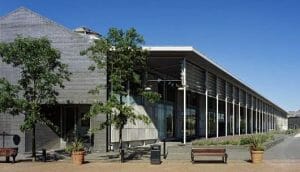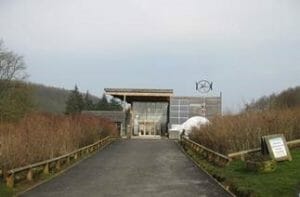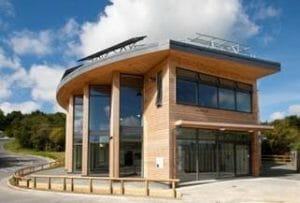
Written by construction and building insurance specialist, CRL
Ecobuild, hailed as the world’s biggest event in the calendar for sustainable design, construction and the built environment, took place last month. At the event, developers and policy-makers debated the challenges of building more homes whilst remaining considerate towards the environment.
Research shows that worldwide, the construction of offices, hotels and retail outlets is booming, with nearly half (46%) of all respondents expecting to build commercial structures with high environmental standards in the next three years. Whilst the industry is yet to see such a seismic move towards eco-friendly design within the UK, the construction industry is showing positive signs. According to Dodge Data and Analytics, 37% of UK developers are positive that in the next three years, green buildings will from part of their portfolio.
And for good reason. The combination of green design techniques and clever technology can not only reduce energy consumption and environmental impact, but can also reduce running costs, create a more pleasant working or living environment and boost property values and rental returns.
Here are five examples in the UK that show just how innovative eco-buildings can be:

Bloomberg HQ
Located in London, the new 10-storey facility – billed as the world’s most sustainable office building – achieved the highest-ever Building Research Establishment Environmental Assessment Method (BREEAM) score for office buildings, earning a 98.5% rating based on the global sustainability standard. The exceptionally green project acquired this, in part, by utilising traditional sustainability solutions, such as a grey water collection system on the roof and vacuum-drainage toilets that dramatically reduce water usage. The most eye-catching energy-saving feature of the headquarters though, is approximately 4,000 integrated ceiling panels that combine heating, cooling, lighting, and acoustic functions. Half a million LED lights are embedded into the bespoke panels and use 40% less energy than a typical fluorescent office lighting system.

Waitrose Stratford City, London
The first retail store to receive BREEAM’s “outstanding” rating, Waitrose Stratford City is run completely off-grid through Westfield’s energy centre. All unusable food waste is sent to an anaerobic digestion plant where it is converted into energy which goes back into the national grid. Low carbon lighting is used, and cold air is retrieved from the fridges and used to cool the shop.

The National Trust HQ
The National Trust occupies one of the greenest offices in the UK. Carbon emissions are 65% less than similar developments, largely due to an array of photovoltaic panels on the roof, which provide 30% of the annual electricity use. Eco-friendly materials, such as PVC-free linoleum and water-based paints, were used throughout the building. There are some ingenious ideas here too, like the carpets in the building which were made from wool from the Trust’s flocks of Herdwick sheep and the ventilation snouts on the roof which were made out of recycled beer cans.

Dalby Forest Visitor Centre
Winner of the 2007 Better Public Building Award, this North Yorkshire structure makes full use of the environment around it. The forest next door supplies wood chips to power the boiler and is also where the wood used to clad the building came from. Photovoltaic panels and a micro wind turbine supply the electricity. Even the toilets are flushed with rainwater gathered on the roof and stored in a tank, reducing the amount of water taken from the village well. What’s more, the whole building can be entirely recycled at the end of its life.

Eden Foundation building
The Eden Foundation building in St Austell, Cornwall is recycling at its finest and completely PVC-free. Old newspapers were used to insulate the roof, walls, and floor, making it one of the best insulated buildings in the country. They even managed to minimise the amount of soil removed from the location during construction, as well as the amount of cement needed to build it, by sitting the building on timber columns.
Looking ahead
Environmentally friendly and cost-effective properties offer a winning combination, with it being reported that truly sustainable buildings can even make money. Logs, stone and recycled shipping containers are all rising in popularity to create eco-friendly homes across the world, as are the use of other natural materials like bamboo and straw, showing that there is a variety of materials that can be used in a conscious effort to be sustainable.
It’s always exciting to see how architects can combine environmental technology with cutting edge creative design, for example, Google’s proposed 11-storey landscraper, designed to be low-energy and sustainable.
At CRL, we expect to see SME developers embracing sustainable development ahead of the large firms. We must encourage this continued entrepreneurialism and innovation in the industry so we start to see these environmental advances extend into the residential market.
Nevertheless, the UK has a long way to go to reach the ambitious target proposed by the Government, to reach zero carbon by 2020. If the industry continues to embrace sustainability and create eco-friendly structures, then this vision might become more of a reality.
This message has been scanned for malware by Forcepoint. www.forcepoint.com
